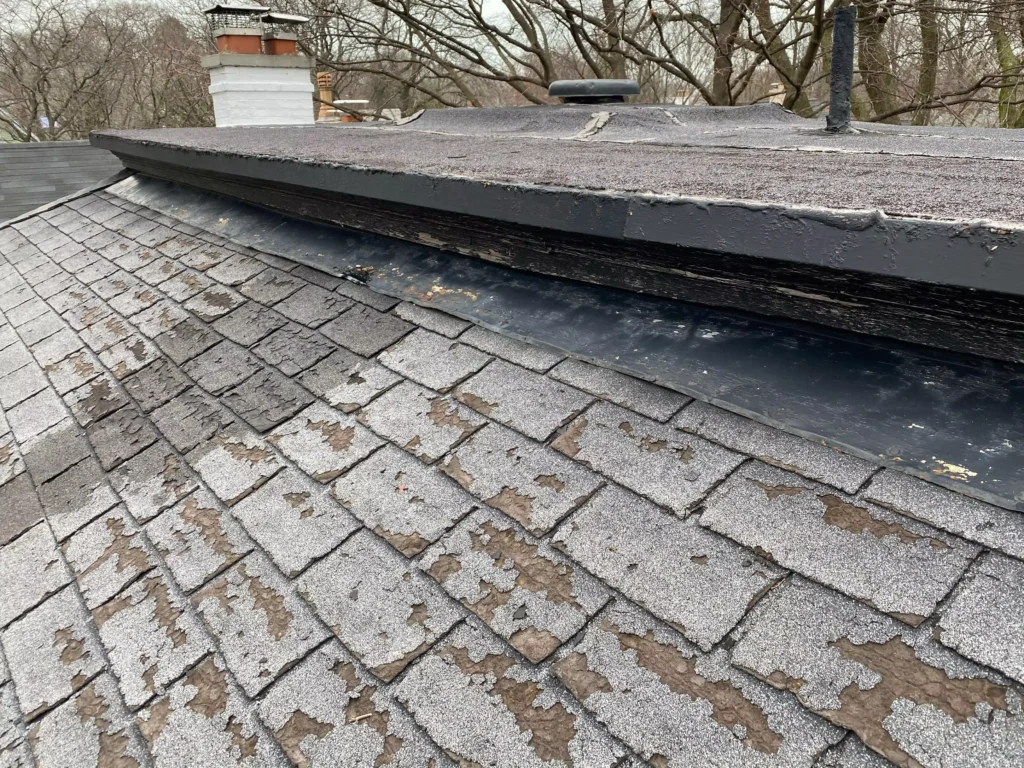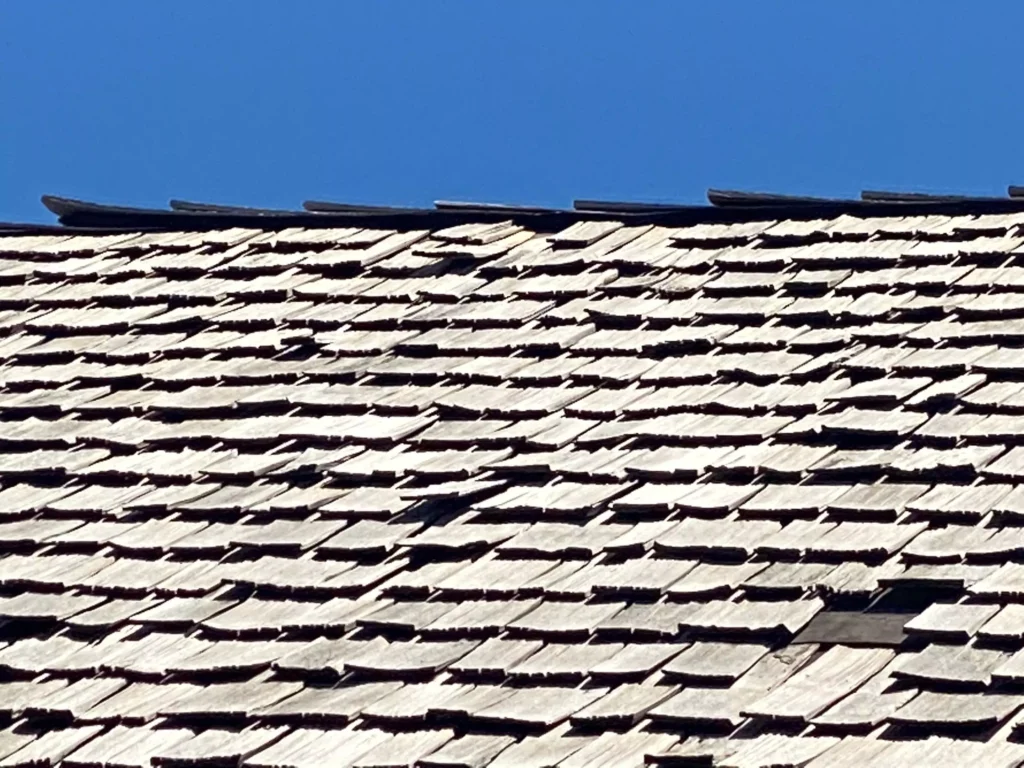Unfortunately, no roof has yet been invented that, while retaining its protective and insulating functions, will last forever. Regardless of the materials used, every roof wears out and sooner or later it is time to replace it. Of course, the life of a roof can be prolonged by regular inspections and proper care. However, this does not change the fact that every now and then the roof simply has to be replaced. This usually depends on the roofing material – asphalt shingles usually last between 20 and 25 years, while metal roofs can last well over 70 years.
Of course, every roof is different, differently cared for and located in a different location, so it is impossible to say definitively after how many years it should be replaced. Instead, you can observe the roof and recognise that it needs replacing by, among other things, its physical condition, the temperature in the house and sometimes even by noises. In this article, that’s what we’ll focus on and we’ll give you the warning signs that can indicate an overly worn roof. We will divide them into different sections, first talking about signs directly related to the roofing material and then mentioning what else to look out for in your home.

Why is this article important?
It is very important that you are aware of the possible warning signs that alert you to wear and tear on your roof, as this can help you avoid much more costly consequences than replacing your roof. These range from financial loss, loss of your home to those of your health. Below, we will outline some key reasons why you should not ignore the need to repair or replace your roof.
Water-related risks
Some of the biggest and most popular risks for homeowners are those associated with leaks. Water has a way of spreading slowly, but in different ways. Over time, it penetrates the thermal insulation layer, causing mould growth and a decrease in its effectiveness, into walls and ceilings, significantly affecting their condition (among other things, creating discolouration and weakening the plaster) and, once it gets into the right places, it can damage electrical wiring.
Another aspect is mould and fungi, which not only can be very expensive to remove once they get into hard-to-reach places, they also threaten the health of the owner and his or her family. Prolonged contact with such micro-organisms can lead to respiratory and skin problems and can even cause infections in people with weaker immune systems.
It is also worth knowing that water problems resulting from leaks are usually not covered by property insurance, making all the costs associated with repairs fall on the owner.

Risks associated with weakening of the roof structure
The first scenario that comes to mind when you think of a weakened roof structure is probably roof collapse. Admittedly, it is difficult to make this happen, but it is possible. If the roof is left very neglected for a long period of time, a roof collapse is likely when weather conditions are favourable, such as a heavy snowstorm or wind.
Another possible scenario is the accumulation of water in various parts of the house. When this infiltrates both the roof and wall elements, the whole structure gains weight, increasing the risk of collapse as the walls, through the deteriorated condition of the materials and the additional weight of the roof, may not support all this weight.
Financial consequences of negligence
Neglecting your roof can take a big toll on your household budget. It’s not just about repair costs. The roof is one of the main places through which heat escapes from the interior of the house – up to 25% of it. So if the roof is leaking or the insulation is damaged, for example by damp, the heating will run for longer and more intensively. This will result in a significant increase in electricity bills, especially during periods of lower temperatures.
Asphalt shingles
So let’s move on to discussing the warning signs we may encounter in various roofing components. We will first discuss asphalt shingles, the most popular roofing material in the US. Many signs of wear and tear on asphalt shingles can be seen with the naked eye. Sometimes all it takes is a walk around the roof for your attention to be drawn to cracked, gapped or completely missing shingles. Each of these signs suggests wear and tear on the material however, they should not be treated the same.
Cracking and bending of the shingles will sooner or later appear on your roof, when, with good quality shingles and proper maintenance, it will be after up to 25 years. However, it is important to bear in mind that these symptoms are indicative of the loss of volatiles, the chemicals that provide water resistance and flexibility to the shingles. Even if only some shingles are bent, others, if they were installed at a similar time, may be at their limit. An inspection should then be carried out immediately or you should consider replacing the roofing straight away.

Areas where the shingles have broken off, for example as a result of high winds or storms, should be replenished as soon as possible. In addition, you should check that your shingles have not ‘turned bald from the granules’. – such a sign is also an indication of wear and tear. Any of these signs makes it easier for water to get under the surface of the roof and means that the life of the material is coming to an end.
Cedar shakes
Cedar shakes are a very aesthetically pleasing roofing material. They are all-natural as they are made from cedar wood. However, this does not mean that they are not durable – with good maintenance and favourable weather conditions they will last between 30 and 50 years.
Signs to look out for are cracking and bulging. Cedar shingles change their volume under the influence of the temperature over the course of the year, which over time leads to cracking and excessive curling. It is worth bearing in mind that shakes curling to some extent is perfectly natural and desirable. However, it is easy to spot excessively curled shingles, which can lead to leaks.


If you have noticed such symptoms on your roof, this does not mean replacing the entire roofing right away. Consult specialists who will be able to determine how best to deal with the situation. If a large number of shingles are in good condition, the solution may just be to replace the broken ones.
Another sign of cedar shakes deteriorating is their rotting. This usually happens in situations where the roof has limited access to sunlight and wind – then instead of drying quickly, the shingles retain moisture for longer. This can lead to wood rot and moss growth. This condition is easy to spot, as it is characterised by visible moss and a frayed texture or cracks along the lower edges of the shingles.
Metal roofs
The most obvious problem with both roofs and other metal items is corrosion. Rust starts to appear in metal roof components when a protective coating, such as Kynar 500, wears off – the key to keeping a metal roof in good condition is to reapply it in good time, along with taking care to prepare it properly for this. A roof usually starts to corrode where the metal sheets join together, i.e. at the fittings and fasteners. So if you have noticed such a problem during an inspection, it is essential to consult a specialist. It may not be necessary to replace the entire roofing, as long as you do not bring the roof to a state where a significant part of it is covered with rust.
Other possible signs to worry about are mechanical damage. There can be many causes, the most common being extreme weather conditions such as storms or hailstorms, but also falling branches. In these cases, the sheet metal can become dented or torn. In these cases, if they are isolated, the sheet metal can often be repaired and sealed, but for larger damage this will only be a temporary solution. However, if the tears are numerous, it is likely that the entire panel will need to be replaced, as the structural integrity of the roof is then compromised.
Warning signs on the ceiling and walls
As mentioned earlier, one of the main risks to your home caused by a damaged roof is the presence of water in other parts of your home. If you notice yellowish stains on the walls or ceiling, this could be a sign of a leaking roof. These stains may be really small at first, but they will get bigger over time. If this is the case, contacting a specialist will be necessary to locate the leak and seal it.

Warning signs in the attic
The attic is a place where you may notice a few worrying signs, so even if you don’t keep your belongings there and have no other reason to enter it, it is definitely worth doing a personal inspection from time to time. You should then pay attention to:
- Smell – If there is a lingering musty smell in your attic, this may indicate mould or fungal growth somewhere in the attic, resulting from a leak. Be sure to locate where the unwanted micro-organisms are growing and remove them, such as with fungicides. It is also imperative that you locate the site of the leak and take action to seal it.
- Extra sunlight or feeling the wind – If you see sunlight coming in from an area where there are no windows or ventilation cages without turning on the lights in the loft, this is a definite sign of a hole in the roof. The same goes for feeling the wind on your skin – unless, of course, it’s a whiff of working ventilation.
- Noise coming from the roof – If you hear noises coming from the attic in the wind, this could be a sign that the shingles are pulling away from the roof, which is a sign of wear and tear. Of course, there are plenty of other possibilities for the cause of the noise, such as loose gutters, but for peace of mind and possible early diagnosis, it’s worth making sure your roofing is okay.
- Any sign of water or dampness – Possible scenarios can range from damp wood to puddles on the floor, but any of these signs are indicative of an unwanted presence of water, most likely caused by roof damage.

Thermal insulation problems
There are several signs of damage to the insulation layer that can result from a poor roof condition. As in a large number of other cases, water leaks are mainly involved. Two of the possible problems have already been mentioned above – mould and a musty smell and higher electricity bills. The stench can come from the wet insulation layer, as fungi can also develop inside it. Higher heating bills, on the other hand, are indicative of poor heat retention in the house.
Another sign of problems with the insulation layer is a temperature difference in the rooms – this can indicate localised leaks and heat escaping on one side only.

Unwanted roofing materials in gutters
A very easy warning sign of wear and tear on our roof, or more specifically its covering, is the presence of granules or other pieces of roofing material in the gutters. Such a symptom is indicative of wear and tear and decay of the material.
Roof deformation
If the structure has been weakened by factors such as damp, pests or simply old age, the roof slope can collapse. Localised bowing and lowering occurring to a small degree is not necessarily a reason to replace the roof, as many might think – the structure can be reinforced with additional beams and supports, but only if the rest of the elements are in good condition, which is very rarely the case. As a rule of thumb, if there is distortion, other roof components are also worn out. In such cases, you should call for help as soon as possible and ensure the safety of your home.
Summary
Wear and tear on the roof can, as you can see, be identified in a number of ways. Often one perceived problem leads to another. So it is worth taking care of your roof and carrying out routine inspections from time to time. Remember that the knowledge of an experienced professional is irreplaceable, and consulting one can help you avoid the large costs of repairing subsequent negligence.



